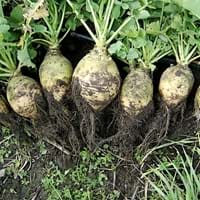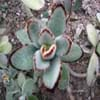Life Span
Perennial
Biennial
Type
Flowering Plants, Shrubs
Vegetable
Origin
Asia, North America
Hybrid origin
Types
Lonicera caerulea altaica, Lonicera caerulea cauriana, Lonicera caerulea kamschatica
Argentine canola
annua – annual rape and summer rape
swede rape
pabularia – Hanover-salad
Habitat
Wet lands
Not Available
USDA Hardiness Zone
Not Available
6-9
AHS Heat Zone
Not Available
9-3
Sunset Zone
Not Available
A1, A2, A3, H1, H2, 1a, 1b, 2a, 2b, 3a, 3b, 4, 5, 6, 7, 8, 9, 10, 11, 12, 13, 14, 15, 16, 17, 18, 19, 20, 21, 22, 23, 24
Habit
Cushion/Mound-forming
Rosette/Stemless
Flower Color
Yellow
Yellow, Light Yellow
Flower Color Modifier
Bicolor
Bicolor
Fruit Color
Brown
Tan, Brown
Leaf Color in Spring
Dark Green
Black, Green, Green, Dark Green
Leaf Color in Summer
Blue Green, Gray Green
Green, Blue Green
Leaf Color in Fall
Blue Green, Gray Green
Green, Blue Green
Leaf Color in Winter
Blue Green, Gray Green
Green, Blue Green
Plant Season
Summer, Fall, Winter
Spring, Summer, Fall, Winter
Sunlight
Full Sun, Partial shade
Full Sun
Growth Rate
Medium
Medium
Type of Soil
Well drained
Loam, Sand
The pH of Soil
Neutral
Acidic, Neutral
Soil Drainage
Well drained
Well drained
Bloom Time
Late Winter, Spring, Summer
Spring, Late Spring, Early Summer, Summer
Tolerances
Drought
Drought
Where to Plant?
Ground
Ground
How to Plant?
Seedlings
Seedlings
Plant Maintenance
Medium
Medium
Watering Requirements
Get enough water whenever the soil is dry
Water frequently while growing, Water slowly, and allow to dry completely between soakings
In Summer
Lots of watering
Lots of watering
In Spring
Moderate
Moderate
In Winter
Average Water
Average Water
Soil pH
Neutral
Acidic, Neutral
Soil Type
Well drained
Loam, Sand
Soil Drainage Capacity
Well drained
Well drained
Sun Exposure
Full Sun
Full Sun
Pruning
Prune for shortening long shoots, Remove damaged leaves, Remove dead branches, Remove dead leaves
Remove damaged leaves, Remove dead branches, Remove dead leaves
Fertilizers
All-Purpose Liquid Fertilizer
All-Purpose Liquid Fertilizer, Apply N-P-K
Pests and Diseases
Red blotch
Blackleg, Clubroot, Flea Beetles, Grasshoppers, Lygus bugs, Red blotch, Slugs, Snails, Verticillium Wilt, white rust
Plant Tolerance
Drought
Drought, Humidity, Shade areas
Flower Petal Number
Single
Single
Foliage Texture
Bold
Coarse
Foliage Sheen
Matte
Matte
Attracts
Bugs
Flea beetles, Moths, Snails
Allergy
Not Available
Asthma, Mild Allergen, Toxic
Aesthetic Uses
Showy Purposes
Not Used For Aesthetic Purpose
Beauty Benefits
Not Available
Not Available
Environmental Uses
Air purification
Air purification
Medicinal Uses
anti-inflammatory, Cardiovascular problems, Eye Problems
Diuretic, Emollient
Part of Plant Used
Fruits, Leaves
Leaves, Root
Other Uses
Food for animals, Food for insects, Used as Ornamental plant, Used for its medicinal properties
Not Available
Used As Indoor Plant
No
No
Used As Outdoor Plant
Yes
Yes
Garden Design
Bedding Plant, Container, Edging, Edible, Herb / Vegetable, Mixed Border
Edible, Herb / Vegetable, Mixed Border
Botanical Name
Lonicera caerulea
BRASSICA napus var. napobrassica
Common Name
honeyberry, blue-berried honeysuckle, sweetberry honeysuckle
Rutabaga, Swede , Swedish Turnip
In German
Honeyberry
Steckrübe
In French
baie au miel
rutabaga
In Spanish
Honeyberry
nabo sueco
In Greek
Honeyberry
μέγα γογγύλιον
In Portuguese
Honeyberry
Rotavaga
In Polish
Honeyberry
Rotavaga
In Latin
Honeyberry
Rotavaga
Phylum
Magnoliophyta
Tracheophyta
Class
Magnoliopsida
Magnoliopsida
Order
Dipsacales
Brassicales
Family
Caprifoliaceae
Brassicaceae
Clade
Angiosperms, Asterids, Eudicots
Angiosperms, Eudicots, Rosids
Tribe
Not Available
Not Available
Subfamily
Not Available
Not Available
Number of Species
Not Available
Season and Care of Honeyberry and Rutabaga
Season and care of Honeyberry and Rutabaga is important to know. While considering everything about Honeyberry and Rutabaga Care, growing season is an essential factor. Honeyberry season is Summer, Fall and Winter and Rutabaga season is Summer, Fall and Winter. The type of soil for Honeyberry is Well drained and for Rutabaga is Loam, Sand while the PH of soil for Honeyberry is Neutral and for Rutabaga is Acidic, Neutral.
Honeyberry and Rutabaga Physical Information
Honeyberry and Rutabaga physical information is very important for comparison. Honeyberry height is 30.50 cm and width 30.50 cm whereas Rutabaga height is 30.00 cm and width 30.00 cm. The color specification of Honeyberry and Rutabaga are as follows:
Honeyberry flower color: Yellow
Honeyberry leaf color: Dark Green
Rutabaga flower color: Yellow and Light Yellow
- Rutabaga leaf color: Black, Green and Green, Dark Green
Care of Honeyberry and Rutabaga
Care of Honeyberry and Rutabaga include pruning, fertilizers, watering etc. Honeyberry pruning is done Prune for shortening long shoots, Remove damaged leaves, Remove dead branches and Remove dead leaves and Rutabaga pruning is done Remove damaged leaves, Remove dead branches and Remove dead leaves. In summer Honeyberry needs Lots of watering and in winter, it needs Average Water. Whereas, in summer Rutabaga needs Lots of watering and in winter, it needs Average Water.





